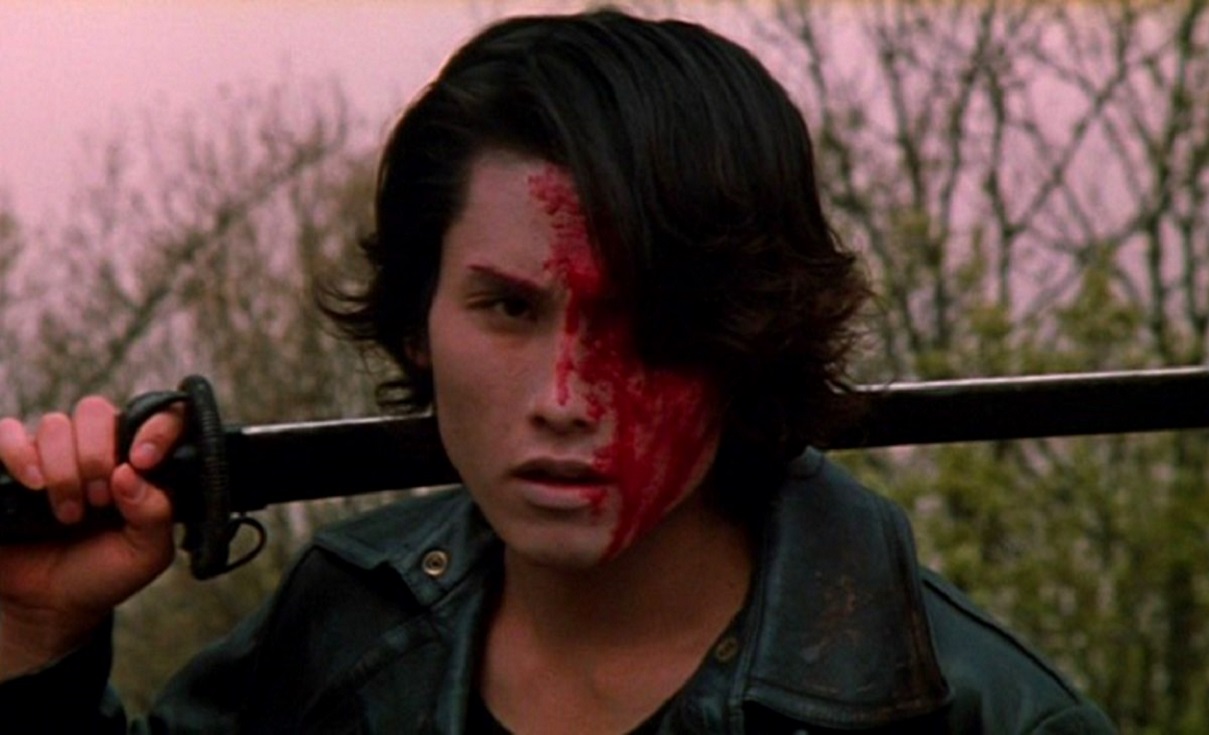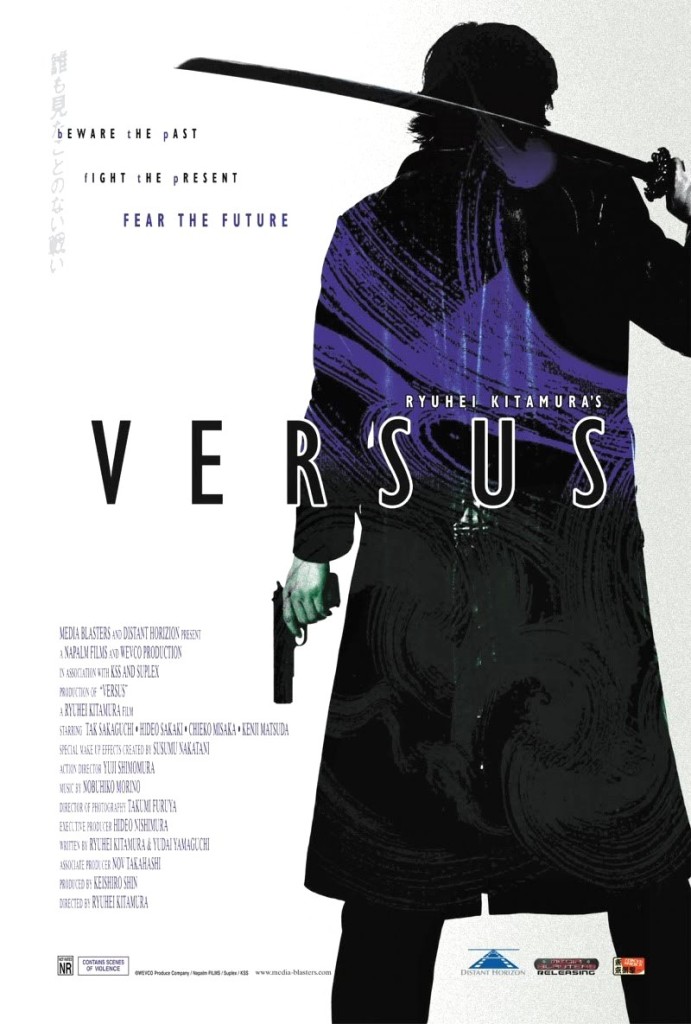Japan. 2000.
Crew
Director – Ryuhei Kitamura, Screenplay – Ryuhei Kitamura & Yudei Yamaguchi, Producer – Keihiro Shin, Photography – Takumi Furuya, Music – Nobuhiko Morino, Action Direction – Yuji Shimonura, Makeup Effects – Susumi Nakatani. Production Company – Wevco Produce Co/Napalm Films.
Cast
Tak Sakaguchi (Prisoner KSC2-303), Hideo Sakaki (Villain), Chieko Misaka (Girl), Kenji Matsuda, Yuichiro Arai, Minoru Matsumoto, Kazuhito Ohba, Takehiro Katayama, Ayumi Yashahara, Shoichiro Matsumoto, Toshiro Kamaka, Yukihiko Tamikado, Hoshimi Asai, Ryosuke Watabe, Motonari Kumiya
Plot
Two escaped prisoners arrive at a rendezvous with a gang of Yakuza thugs where they are under orders to wait for their mysterious benefactor. The thugs have also taken a girl captive but when one of the prisoners demands that she not be abused, a violent shootout ensues. One of the prisoners is killed but the other escapes into the woods along with the girl. The Yakuza give pursuit but as they enter the woods, they face the bodies of the murder victims buried there that have risen from the dead as zombies. The woods are in fact The Forest of Resurrection – one of the 666 gateways to Hell on Earth – that allow the dead to be revived. The mysterious benefactor soon arrives, raising the slaughtered thugs from the dead. He has been waiting many years for reincarnation to come around so that he, the girl and the escaped prisoner can arrive at their destined showdown where he plans to spill their blood in order to open up the gateway to Hell.
Versus was a the directorial debut of Ryuhei Kitamura who had since become a regular genre contributor in various outings in both Japanese and English-language. Kitamura had earlier made the film as a 47-minute long short, Down to Hell (1997), which he expanded to feature-length debut here.
It is clear with Versus that someone came up with the appealing notion of combining a George A. Romero zombie splatter film and the balletically stylised Hong Kong gangster film as patented by John Woo. Director Ryuhei Kitamura parrots John Woo’s patented moves – people strutting along in slow motion in tight black leather and shades; multiple Mexican standoffs between gun-wielding hoods; slow-motion shots of ammo clips being ejected; slow-motion shots as people run from lines of machine-gun fire; hoods popping the joints of their neck into place.
In also being conceptually mixed up with the gore-drenched George Romero zombie movie, a la Dawn of the Dead (1978), this results in a bizarre melanges of incongruous images – like that of zombie gangsters wielding handguns as they attack victims. Versus is extremely gory with numerous images of heads being severed or kicked off, faces blown away, intestines spilt, a punch that goes through someone’s chest to come out holding the victim’s heart in the hand, a fist punched through a head coming out holding the eyeballs, and the camera looking out through holes blown in heads and stomachs.

On the down side, there is only the kinesis of Hong Kong gangster movie stylistics and the gut-grunching gore that keeps the film going. There is nothing else to the film beyond this. The characters are one-dimensional to the point of not even being given names to distinguish them from one another. In effect, Versus is more like a videogame along the lines of Resident Evil rather than a film – of a nominal hero having to ultra-violently dispatch various menaces that randomly pop up, the menaces constantly being resurrected as more powerful zombies and so on. There are not even any sets – the entire film takes place in a forest. It feels more like a test reel that puts one action sequence and one gore sequence after another in repetitive variation without anything in between. There is some talk about the 666 gates of hell, one of which is in the forest, and about the hero and villain being reincarnated brothers, but this is afforded such scanty time that it feels there only as the most minimalist motivation needed to hang the action/gore sequences together.
The version seen here is the original 119-minute version, which was cut by some distributors. The longer version certainly feels drawn out once one gets past the 60-minute mark.
Ryuhei Kitamura has also made Alive (2002), an interesting sf film about a psychological experiment conducted in a prison; a horror segment of the anthology Jam Films (2002); the fantastic samurai film Aragami (2003); Sky High (2003) about a woman who returns from the afterlife as a vengeful ghost; Godzilla: Final Wars (2004); the Clive Barker adaptation The Midnight Meat Train (2008); the anime science-fiction film Baton (2009); the US horror film No One Lives (2012), a live-action adaptation of the manga Lupin III (2014), the English-language horror Downrange (2017), the Mashit episode of the horror anthology Nightmare Cinema (2018), the non-genre action film The Doorman (2020) and the horror film The Price We Pay (2022), before a return to Japan with the afterlife film The Three Sisters of Tenmasou Inn (2022), as well as produced Battlefield Baseball (2003) and Hellgate (2011).
Trailer here


